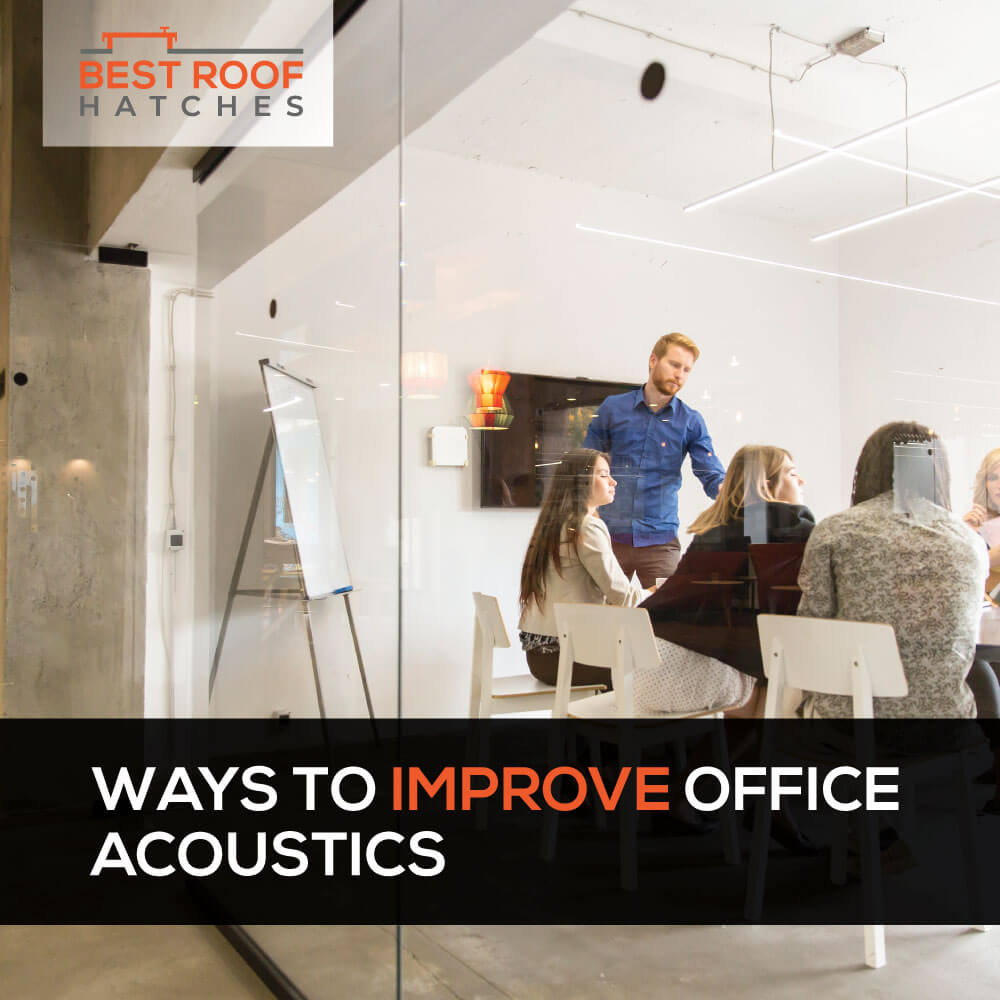Share this
Ways to Improve Office Acoustics
Posted by Best Roof Hatches on 2021 Nov 24th
A noisy environment can overwhelm the senses resulting in many stresses and lower focus. It can also result in lower productivity levels which will significantly impact the performance of your business. Improving the acoustic quality of your office will provide many advantages, including productivity improvement.
There are ways to compensate for the drawbacks of open-concept office design, particularly high noise levels and a lack of privacy and concentration. Reconsidering your workplace acoustics is one of these techniques. Good sound muffling solutions can dampen and minimize reverberation of sound, improving actual output while keeping the open concept layout that has come to define a modern and inventive office environment, even within the constraints of vast, open space.
Clouds or Baffles
Installing ceiling-mounted acoustic panels is an efficient technique to minimize the sound reverberation in rooms with high ceilings while maintaining the design and decor of the interior. Referred to as Baffles, you can typically place them down to hang lower into the area, ideal for lighting design. They're excellent options for reducing unwanted noise so you can leave your floor area clear and preserve the vision of your open-concept design.
Likewise, the floor has a significant impact on how sound travels through the area. Acoustic flooring materials such as area rugs, carpeting, and its forms, such as cork tiles, can provide excellent sound dampening and improved workplace acoustics. Using acoustic foam to line the ceilings precisely over noisy areas improves sound quality dramatically and can even provide a point of appeal to the space.
Just ensure to install some roof access hatch if you have utility areas that require some access. It will make it easier if you want to conduct maintenance, inspection, or installation procedures in the future. There are many designs and various materials you can choose from to blend them with your design and not ruin the aesthetics.
You must first consult a professional to know the pros and cons of using different roofing materials. The roof area might add some noise dampening effect if you utilize the correct one with what you are doing in your interior spaces. It will optimize the noise reduction effect inside your building.
Designated Work Area
Rearranging your furniture into designated work areas is an easy and affordable approach to reduce the harmful effects of noise in the office. Knowing the activities in your workplace can help you create a more pleasing sound environment and make better use of the space. You established work zones by dividing various workgroups based on their unique acoustic requirements.
While your finance team operates in more high-energy, cooperative groups, your sales and marketing team may require a more quiet environment. Make sure your frantic break area and quiet conference room are on different sides of the workplace.
Sound-Absorbing Materials
Soft surfaces absorb sound, whereas hard surfaces reflect it. That exposed brick office wall, as attractive it may seem, helps to amplify sound energy reverberation. Covering it up will regulate and restrict the flow of sound in large open spaces, at least in part. A range of acoustic materials reduces sound reflection in open areas while adding personalized and attractive touches to the overall design.
You can install these materials on the walls of seating spaces that promote meaningful dialogue, acoustic tiles, luxuriant vegetation, or textile wall hangings. Customize your acoustics to match your company's branding. Even if your workplace is open-concept, you'll need a location for private meetings. Use acoustic wall panels or other sound-absorbing panels or sound-dampening materials as workstation dividers to provide employees their much-needed solitude.
Erectable walls or modular screens can provide temporary seclusion and enhanced sound management. They divide parts of your office setting for more efficient focus and concentration in situations where it requires a fixed workplace solution. You may leave them in place or remove and relocate them, adding to the open design concept while also offering flexibility for workers who want to roam around while working.
Sound Masking
Whereas most acoustical solutions aim to eliminate undesirable and irritating sound, some unique systems are on the market. They bring sound to an open concept workplace, generated with specialist digital generators and disseminated through concealed speakers. Noise masking systems, often known as pink or white noise, generate random broadband noises that are minimal and pleasant background noise.
By masking and filling in the audio spectrum to conceal speech or excessive quiet, sound masking devices reduce acoustic disturbance. The system adapts to the noise levels in the office, turning up the volume when necessary and turning it down during calm periods.
Furniture
Modular rooms and furniture allow your staff to roam around freely at work while also delivering acoustic benefits. It's an excellent approach to handle sound management and flexibility in the office. The utilization of acoustic furniture is a function-based purpose, using acoustical materials and integrated sound-absorbing panels to provide isolation from all office activity while reducing obstacles and disruptions to the office design itself.
Soft plush seat covers can also assist with sound absorption. You can buy or incorporate these acoustic-sensitive materials like chairs, storage/filing solutions, workstations, shelves, and bookcases.
One of the most typical issues in the workplace is poor acoustics. Minor disruptions might disturb your focus and cause more stress. However, it should not be too silent either. A decent rule is that modulated sounds are preferable to irritating noise.
If you happen to need roof hatches for your upcoming projects, visit https://bestroofhatches.com/ now, where you can find many products from trusted brands, all sorted in a categorized manner for your convenience. You can also call 1-800-431-8651 for more inquiries.

